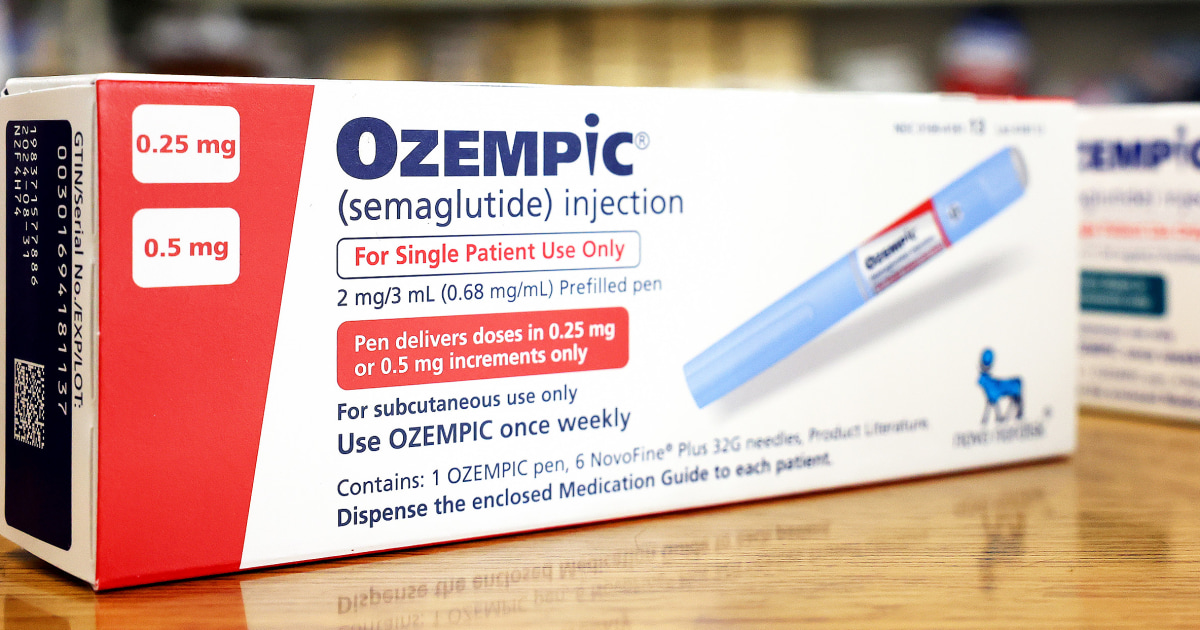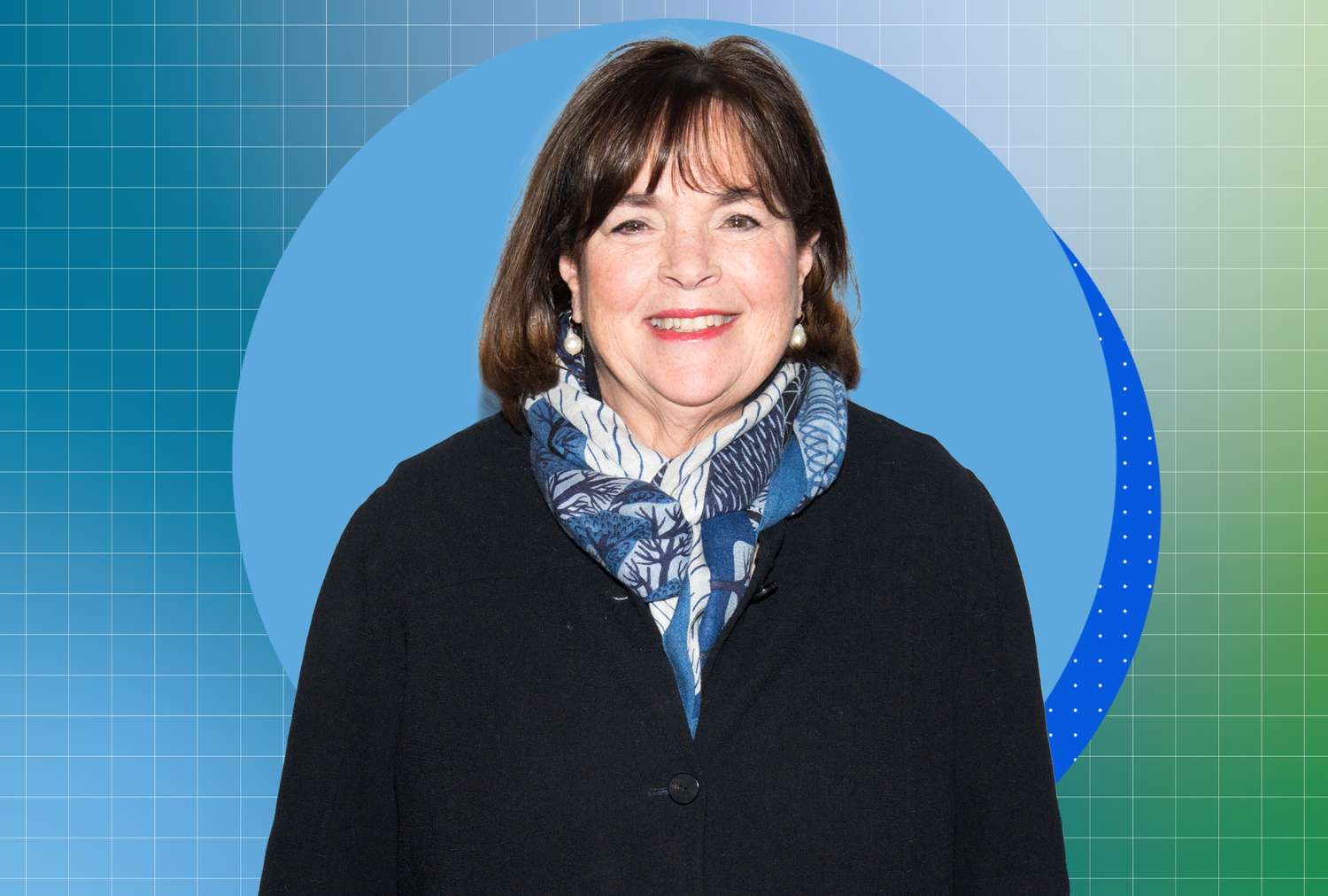Weight loss with Ozempic or Wegovy often means avoiding certain foods to minimize side effects from the medications.
At the same time, it’s important to prioritize some foods to stay healthy and continue weight loss success.
Both drugs contain semaglutide, a synthetic version of a hormone known as GLP-1, which the body releases into the intestine when people eat food, reducing feelings of hunger.
But in addition to losing weight, people taking GLP-1 medications “lose a ton of muscle,” so it’s important to get enough protein, said NBC News medical contributor Dr. Natalie Azar on TODAY in a segment that aired in July 2025.
“GLP-1 therapies are powerful, but they’re most effective when paired with intentional, nutrient-dense eating patterns,” said Dr. Lydia Alexander, immediate past president of the Obesity Medicine Association, in a statement.
“Nutrition is not an afterthought — it’s a therapeutic partner.”
Eating right helps patients sustain weight loss and preserve lean mass, she added.
Alexander is co-author of an advisory listing nutritional strategies for GLP-1 patients, published in four journals in May 2025.
GLP-1s “can present challenges” such as gastrointestinal side effects, risk of nutrient deficiencies, and muscle and bone loss, but nutrition therapy can help, said Dr. Dariush Mozaffarian, the paper’s lead author and professor at the Tufts School of Medicine.
Ozempic is a Type 2 diabetes treatment sometimes prescribed off-label for weight loss. Wegovy is the form of Ozempic specifically approved to treat obesity.
Their most common side effects include nausea, diarrhea, vomiting, stomach pain and constipation, according to Novo Nordisk, the pharmaceutical company that makes both medications.
What to Eat on Ozempic
Experts offer this advice:
Eat Smaller and More Frequent Meals
Vomiting is more likely with big meals, so eat a small breakfast and then additional small meals every three to four hours while drinking adequate fluids. Ginger or peppermint tea can be beneficial for avoiding nausea.
It’s possible to feel a bit more sluggish since people on GLP-1s are eating less, so having smaller, more frequent nutrient-dense meals can help that, Azar said.
Healthy smoothies and protein drinks with fruits, vegetables and unsweetened milks or yogurt; cottage cheese and soups can provide needed nutrients when appetite is low.
Restaurants are even creating “Ozempic menus” that feature mini meals with bite size portions for diners who take GLP-1 drugs and have a reduced appetite.
Gradually Increase Fiber
Constipation is common with weight loss, so GLP-1 patients should eat foods with higher water content, including fruits and vegetables, which keep things moving in the digestive system. Examples include watermelon, cucumber, strawberries and tomatoes.
They should also gradually increase foods with soluble and insoluble fiber, such as prunes or other dried fruits.
Eat Nutrient-Dense, Minimally Processed Foods
The list includes fruits, vegetables, whole grains, legumes, lean proteins, nuts and seeds.
Consider Supplements
Dietary supplements may be needed to supply “at-risk nutrients” such as vitamin D, calcium or B12.
Prioritize Protein-Rich Foods
Since GLP-1 drugs reduce appetite, patients may not be getting enough protein, which is important to preserve muscle mass.
Aim to get 20 to 30 grams of protein per meal every day, Azar advised.
Eat lots of nutrient-dense, high-protein foods such as fish, eggs, Greek yogurt, cottage cheese, nuts and seeds. It may be helpful to supplement with high-protein shakes and bars.
Plant sources of protein include beans, peas, lentils and whole grains.
Eat the protein portion of your meal first to boost the chances of getting enough. Supplement with a protein shake if you have a decreased appetite, Azar noted.
Minimize red and processed meat since it’s linked with heart disease and colorectal cancer.
Get Enough Liquids
People on GLP-1s can get really dehydrated, so they should aim for eight to 12 cups of water every day, Azar said.
“I have seen patients with chronic nausea and vomiting on (semaglutide), which can cause dehydration and malnutrition if you can’t get enough calories or fluids daily,” registered dietitian Emily Rubin, director of clinical dietetics in the division of gastroenterology and hepatology at Thomas Jefferson University Hospital in Philadelphia, previously told TODAY.com.
Make sure you’re staying hydrated, even if you’re not hungry, said Dr. Maria Daniela Hurtado Andrade, an endocrinologist at the Mayo Clinic’s Precision Medicine for Obesity program. She’s a consultant for Novo Nordisk.
Be a Mindful Eater
Mindful eating is key to success for patients taking these drugs, Hurtado Andrade added.
Stop when you’re feeling full. Commit to eating healthier food as semaglutide reduces hunger and cravings for unhealthy options, Dr. Zhaoping Li, professor of medicine and chief of the division of clinical nutrition at the University of California, Los Angeles, previously told TODAY.com.
The drug provides a “window of opportunity” to adopt a nutritious diet, she said.
“You can have the chance to make the right decisions — to eat good food,” Li said.
What Foods Can Make You Sick on Ozempic?
Patients should avoid foods that may worsen gastrointestinal symptoms such as high-fat and spicy dishes, researchers wrote in the journal Obesity.
GLP-1 medications also slow stomach emptying, which can lead to uncomfortable symptoms, doctors say.
“Food remains in the stomach for a longer period of time. This is one mechanism that contributes to weight loss with this class of medications — people using them have a prolonged sense of satiety and greater portion control,” Dr. Christopher McGowan, an obesity medicine physician and founder of True You Weight Loss in Cary, North Carolina, tells TODAY.com.
“(But) this is exactly why many patients experience nausea and even vomiting with the GLP-1 medications.”
Some foods may stay in the stomach for many hours or even days when taking these drugs, he notes.
Here are foods to avoid on Ozempic and other weight loss medications:
Greasy, High-Fat Foods
They are slower to digest and tend to stay in the stomach the longest, McGowan says.
The longer food remains in the stomach, the more likely a person is to experience nausea and other unpleasant symptoms, such as belching, excessive fullness and vomiting, he adds.
“Those are going to sit like a rock in your stomach and make you feel sick,” McGowan notes.
High-fat foods tend to cause a lot of diarrhea, says Dr. Shauna Levy, a specialist in obesity medicine and medical director of the Tulane Bariatric and Weight Loss Center in New Orleans.
“I’ve seen an almost dumping syndrome-like response in people taking GLP-1s when they eat simple carbohydrates and high-fat foods,” Levy tells TODAY.com.
One Ozempic patient previously told TODAY.com she could once eat a whole pizza, but after using the medication, she’d feel “completely sick” after eating two slices because it was too much grease. Another patient could no longer tolerate hoagies.
Fruits and Vegetables That Contain Significant Roughage
Roughage is the indigestible portion of food. McGowan says fruits and vegetables that contain a lot of it are also slow to exit the stomach and can be problematic. The list includes stringy raw fruits and vegetables, such as pineapple or celery, and those with a tough peel, such as an apple.
Gas-Forming Vegetables
They include broccoli, cauliflower, cabbage, Brussels sprouts, onions and asparagus can also lead to excessive, unpleasant gas, he adds.
Sweet Foods and Drinks
Patients should skip sweet foods if they experience nausea, advises Novo Nordisk, the pharmaceutical company that makes both Ozempic and Wegovy.
Sugary foods can cause stomach aches, Levy says. She also advises skipping sugary drinks.
Fizzy, carbonated drinks can play a role in nausea and indigestion, a study cautioned.
Spicy Foods
If a patient has baseline acid reflux, any foods that exacerbate the condition may be more likely to exacerbate reflux on GLP-1s because the medications delay gastric emptying and can cause acid reflux, Levy says. Spicy foods would fit into that category.
Symptoms include heartburn and regurgitation, according to the National Institute of Diabetes and Digestive and Kidney Diseases.
But if you’re somebody who doesn’t have acid reflux, spicy food is probably fine, Levy notes.
What Should You Avoid While Taking Ozempic?
Alcohol
One benefit seen with GLP-1 medications is less desire to drink alcohol, but patients still need to be careful and not overindulge, McGowan says.
Alcohol is a problem for multiple reasons, Levy cautions.
“One, it’s just empty calories. Two, it tends to make people make decisions that they otherwise might not make,” she notes.
“It could increase hunger, and the whole point of GLP-1s, or at least one of the points, is to decrease hunger. So it sort of negates their purpose.”
Alcohol is probably fine in moderation, but some people may not be able to tolerate it, Levy adds.
Caffeine
Limiting or avoiding caffeine is recommended during weight loss because of the potential diuretic effect of high caffeine intake, the Obesity study authors note.
This can lead to dehydration, which is already a potential concern for patients who are eating less and tend to drink less on GLP-1 drugs, doctors say.
Nausea-Inducing Foods and Habits
Overall, figuring out which foods and drinks can cause problems is a trial-and-error process, Levy says.
Registered dietitian Emily Rubin, who works at Thomas Jefferson University Hospital in Philadelphia, Pennsylvania, also offered these tips to reduce nausea while on the medication:
- Don’t eat or cook strong-smelling food.
- Don’t eat too quickly and don’t have a large drink with meals.
- Don’t lie down soon after eating.
- Don’t wear tight clothes around your waist.
What Is Safe to Eat on Ozempic?
Patients who experience nausea should eat bland, low-fat foods, like crackers, toast and rice; or foods that contain water, such as soups and gelatin, Novo Nordisk advises.
But there’s no official list of “safe” or “unsafe” foods to eat while on the medication — it’s just a matter of figuring out which foods will cause more symptoms for a patient and limiting those, McGowan says.
“Understanding that overall portions are smaller on these medications, we want to optimize nutritional intake and consume the ‘best’ calories available,” he notes. “The focus should be on lean protein, healthy fruits and vegetables, adequate fiber and adequate fluid intake.”
The most ideal situation would be to commit to eating a healthier diet on Ozempic as semaglutide reduces hunger and cravings for unhealthy options, Dr. Zhaoping Li, professor of medicine and chief of the division of clinical nutrition at the University of California, Los Angeles, previously told TODAY.com.
Does Ozempic Make You Not Like Food?
Some patients may experience decreased cravings, hunger and pleasure in eating certain foods, especially when they first start taking Ozempic or Wegovy, Dr. Ania Jastreboff, associate professor at Yale School of Medicine and obesity medicine physician-scientist, tells TODAY.com. She is on the scientific advisory board for Novo Nordisk.
That’s in part because semaglutide, the active ingredient in Ozempic and Wegovy, makes people feel like they’ve already eaten, Dr. Louis Aronne, an obesity medicine physician and director of the Comprehensive Weight Control Center at Weill Cornell Medicine and NewYork-Presbyterian, previously told TODAY.com.
“It’s kind of like if I gave you Thanksgiving dinner and then I asked you to eat another dinner. You’ll say, ‘I can’t possibly eat it. I just ate a whole dinner,’” Aronne, who is a scientific adviser for Novo Nordisk, says.
But, as the patient approaches a healthier weight for their body, the enjoyment of food may return, Jastreboff says.
Some patients also find that intrusive thoughts about food, sometimes referred to as “food noise,” go away on the medication. One patient previously told TODAY.com that they first realized the Ozempic was working when they forgot to have lunch one day.
Then, there’s the impact nausea can have on liking food.
“We call it a side effect, but truly that is how the drug could work — by making you feel you don’t want to eat,” Li said.
Can You Eat Cheese on Ozempic?
Cheese should be limited to smaller portions because it’s high in fat and calories, which can contribute to feeling excessively full, McGowan says. Cheese can also exacerbate constipation in some people, he adds.
Can You Eat Bread on Ozempic?
Some patients may experience excessive fullness from bread due to a “degree of expansion” that happens after eating it, McGowan notes.
Whole-grain foods are important sources of micronutrients and dietary fiber, the Obesity study authors note.
Can You Drink Coffee on Ozempic?
Yes, though keep in mind the diuretic effect of too much caffeine can lead to dehydration.
“Overall, coffee is perfectly fine to consume, but for some individuals can lead to stomach irritation,” he explains. “Therefore, I recommend drinking coffee in moderation, such as one to two cups a day. Patients should also be mindful of calorie-dense additives, like cream and sugar.”
Can You Eat Eggs on Ozempic?
Yes, eggs are among nutrient-dense foods that become more important as patients who take anti-obesity medications eat less, the Obesity study authors note.
Eggs are an excellent source of protein, but their fat and protein content can also lead to slower digestion, so patients should be mindful of portion sizes and the preparation method, McGowan says. Cooking eggs in butter, fatty oils or and bacon grease would obviously create a potential problem, he adds.
Can You Eat Peanut Butter on Ozempic?
Peanut butter can be a great option for a healthy protein-rich snack or small meal, but its fat content means patients could experience problems if they eat too much of it, McGowan says.


